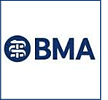International
UK doctors find fault with I.T. systems
December 21, 2022
 LONDON, UK – More than 13.5 million hours of doctors’ time is being lost each year in England due to delays resulting from ‘inadequate or malfunctioning IT systems and equipment’ – the equivalent of almost 8,000 full time doctors, or nearly £1 billion. The findings are from the British Medical Association’s new report, Getting IT Right: A Prescription for Safe, Modern Healthcare, which calls for IT investment to be protected from budget cuts and increased long-term.
LONDON, UK – More than 13.5 million hours of doctors’ time is being lost each year in England due to delays resulting from ‘inadequate or malfunctioning IT systems and equipment’ – the equivalent of almost 8,000 full time doctors, or nearly £1 billion. The findings are from the British Medical Association’s new report, Getting IT Right: A Prescription for Safe, Modern Healthcare, which calls for IT investment to be protected from budget cuts and increased long-term.
Four in five doctors (80%) responding to a BMA survey this year said improving IT infrastructure and digital technology would have a positive impact in tackling backlogs, which currently top seven million patients.
Even more (87%) agreed providing care remotely and remote monitoring of patients will be a key feature in the next 10 years; yet only 24% said they had adequate infrastructure at their hospital for this.
Nearly three quarters (74%) of doctors said they would prioritise bringing software up to date, 72% said they would prioritise updating inefficient hardware, 74% said they would prioritise the interoperability of primary and secondary care systems, and 76% said sharing data between systems was important.
Logging on: The report found some doctors spent half an hour logging into computers, with one saying the ‘ridiculous waste of time’ is putting ‘patient safety at risk’.
One doctor working in secondary care reported having to log on to four different systems to deal with one patient. Another said there were ‘too many logins and passwords’ and different systems ‘not communicating with another’.
A GP noted: ‘The amount of data we are asked to process is horrendous, it takes us away from our patients.’
Just 11% of doctors responding to the survey reported ‘completely’ having the necessary hardware equipment to perform their roles, while 47% said they had it ‘only sometimes, rarely or not at all’.
Almost a third (30%) said software was ‘rarely adequate’ or ‘not adequate at all’ while less than 4% said software was ‘completely adequate’.
Accessing records: The report concluded that software and systems must be streamlined and/or consolidated where possible, and that IT providers must engage with healthcare staff to understand their distinct needs. It recommended IT user groups be established in trusts to flag any issues.
More than half (57%) of doctors working in secondary care reported delays in accessing patient data from primary care occurring ‘always’ or ‘very often’ and only 8% said delays occurred ‘rarely’ or ‘never’.
Four in five (82%) of respondents working in primary care reported delays to accessing data from secondary care occur ‘always’ or ’very often’. Just 1% said they ‘never’ occur.
The report says: ‘This clearly shows that seamless sharing of information is far from being addressed and, while some of this ay be caused by other reasons, such as a lack of digitization or high clinician workload, the lack of interoperability has an important role to play.’
It recommends ‘robust standards’ for interoperability are developed and that these standards must be enforceable on providers. Sharing data across heath services must be done safely and securely, supported by investment, it adds.
Involve doctors: Another recommendation is including doctors with an interest and expertise in digital transformation in the process, offering digital leadership roles.
Respondents reported historic IT training as being ‘sketchy’, ‘not specific’ and ‘delivered by people who do not do the job’. They suggested it be ‘targeted to ability’ and role-specific’.
While 75% of doctors said they had received IT training, 33% said they needed or wanted more.
The report also calls for any improvements in patient-centred IT initiatives be safe and avoid creating health inequalities through digital exclusion, and inform patients about how their data is being used.
This might involve digital inclusion strategies, offering internet access in deprived areas, keeping non-digital access methods available and transparency over how data is collected, stored and used.
It also notes that while funding for IT infrastructure has increased is ‘has not been sufficient to deliver ambitions’ with National Audit Office data from 2020 showing trusts in England collectively spend 2% on IT/technology, less than the recommended level of 5%. Two thirds (66%) of doctors said funding was a barrier to digital transformation.
‘Now is the time to invest,’ the report concludes, noting: ‘Health services and healthcare delivery across the UK have changed fundamentally over the course of the pandemic’.
